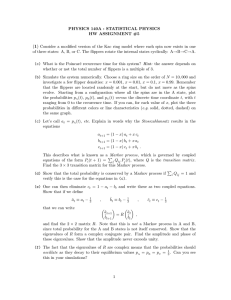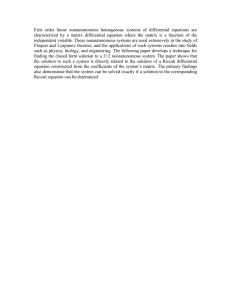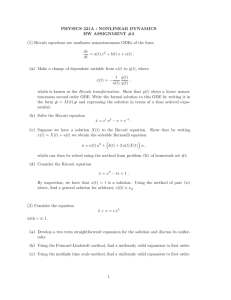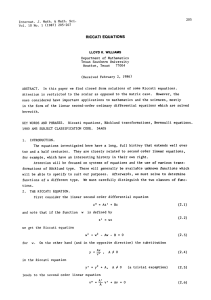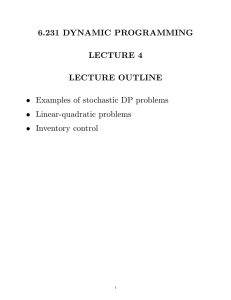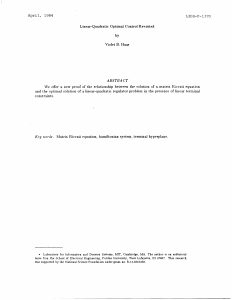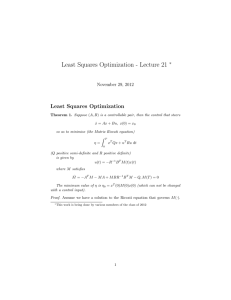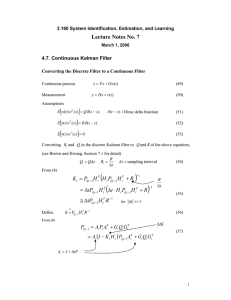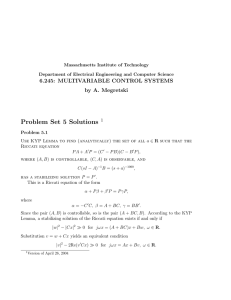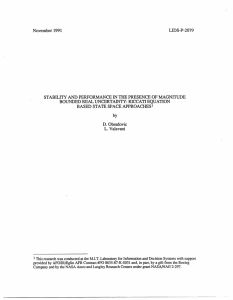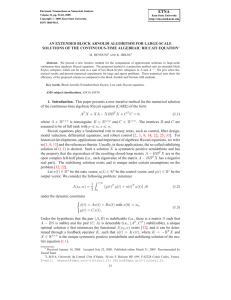(1)
advertisement
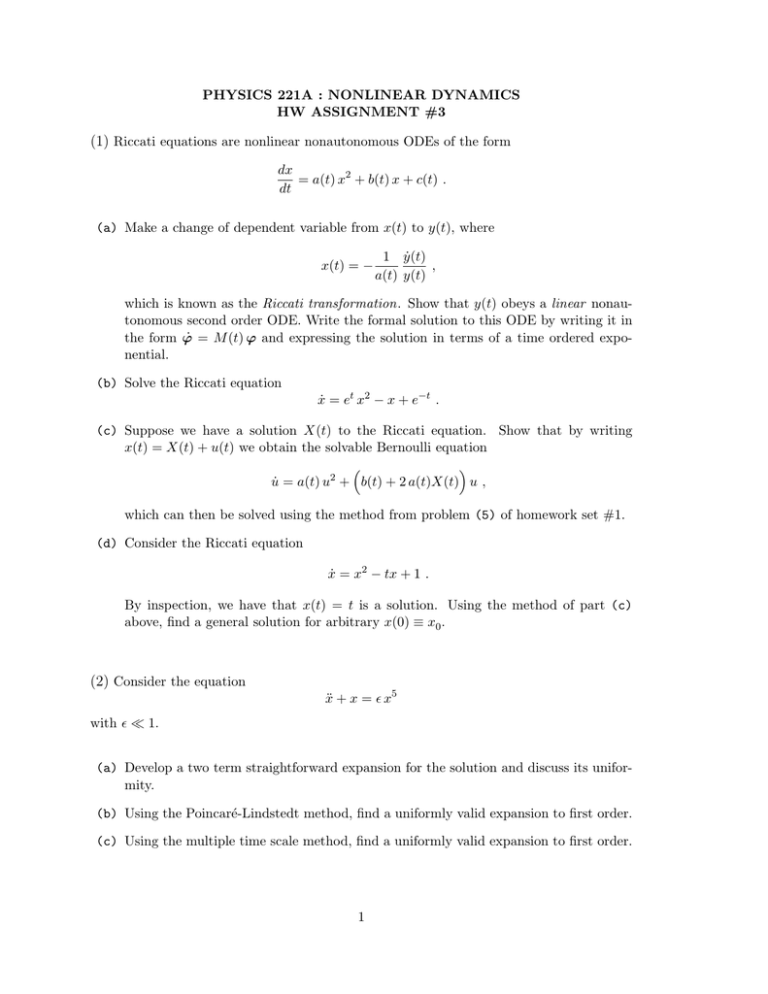
PHYSICS 221A : NONLINEAR DYNAMICS HW ASSIGNMENT #3 (1) Riccati equations are nonlinear nonautonomous ODEs of the form dx = a(t) x2 + b(t) x + c(t) . dt (a) Make a change of dependent variable from x(t) to y(t), where x(t) = − 1 ẏ(t) , a(t) y(t) which is known as the Riccati transformation. Show that y(t) obeys a linear nonautonomous second order ODE. Write the formal solution to this ODE by writing it in the form ϕ̇ = M (t) ϕ and expressing the solution in terms of a time ordered exponential. (b) Solve the Riccati equation ẋ = et x2 − x + e−t . (c) Suppose we have a solution X(t) to the Riccati equation. Show that by writing x(t) = X(t) + u(t) we obtain the solvable Bernoulli equation u̇ = a(t) u2 + b(t) + 2 a(t)X(t) u , which can then be solved using the method from problem (5) of homework set #1. (d) Consider the Riccati equation ẋ = x2 − tx + 1 . By inspection, we have that x(t) = t is a solution. Using the method of part (c) above, find a general solution for arbitrary x(0) ≡ x0 . (2) Consider the equation ẍ + x = x5 with 1. (a) Develop a two term straightforward expansion for the solution and discuss its uniformity. (b) Using the Poincaré-Lindstedt method, find a uniformly valid expansion to first order. (c) Using the multiple time scale method, find a uniformly valid expansion to first order. 1 (3) Consider the equation ẍ + ẋ3 + x = 0 with 1. Using the multiple time scale method, find a uniformly valid expansion to first order. (4) Analyze the forced oscillator ẍ + x = ẋ − 13 ẋ3 + f0 cos(t + νt) using the discussion in §4.3.1 and §4.3.2 of the notes as a template. (5) Consider a modified version of the Kac ring model where each spin now exists in one of three states: A, B, or C. The flippers rotate the internal states cyclically: A→B→C→A. (c) What is the Poincaré recurrence time for this system? Hint: the answer depends on whether or not the total number of flippers is a multiple of 3. (b) Simulate the system numerically. Choose a ring size on the order of N = 10, 000 and investigate a few flipper densities: x = 0.001, x = 0.01, x = 0.1, x = 0.99. Remember that the flippers are located randomly at the start, but do not move as the spins evolve. Starting from a configuration where all the spins are in the A state, plot the probabilities pA (t), pB (t), and pC (t) versus the discrete time coordinate t, with t ranging from 0 to the recurrence time. If you can, for each value of x, plot the three probabilities in different colors or line characteristics (e.g. solid, dotted, dashed) on the same graph. (c) Let’s call at = pA (t), etc. Explain in words why the Stosszahlansatz results in the equations at+1 = (1 − x) at + x ct bt+1 = (1 − x) bt + x at ct+1 = (1 − x) ct + x bt . This describes what is known as a P Markov process, which is governed by coupled equations of the form Pi (t + 1) = j Qij Pj (t), where Q is the transition matrix . Find the 3 × 3 transition matrix for this Markov process. P (d) Show that the total probability is conserved by a Markov process if i Qij = 1 and verify this is the case for the equations in (c). (e) One can then eliminate ct = 1 − at − bt and write these as two coupled equations. Show that if we define ãt ≡ at − 1 3 , b̃t ≡ bt − 2 1 3 , c̃t ≡ ct − 1 3 that we can write ãt+1 ã =R t , b̃t+1 b̃t and find the 2 × 2 matrix R. Note that this is not a Markov process in A and B, since total probability for the A and B states is not itself conserved. Show that the eigenvalues of R form a complex conjugate pair. Find the amplitude and phase of these eigenvalues. Show that the amplitude never exceeds unity. (f) The fact that the eigenvalues of R are complex means that the probabilities should oscillate as they decay to their equilibrium values pA = pB = pC = 13 . Can you see this in your simulations? (6) Create your own pixelated image to iterate under the cat map. Choose a denominator k which is minimally acceptable to convey your image. You can also find many interesting images over the web. (Nothing pornographic, please!1 ) Iterate the pixel coordinates under the cat map. Show how your image gets messed up after a few iterations of the map, but is nevertheless recurrent. You’ll need to write a computer code to do this problem. Nota bene: Problems #5 and #6 were assigned in problem set #5 in Physics 140A during Fall 2008. The solutions are available online through the Winter 2009 Physics 140B web page. Click on “HOMEWORK” and then on “Solution No. 5.” Try to solve the problems by yourselves (alone or in a small group) first, and consult the solutions only if you are having trouble. 1 Well, I suppose animal sex is OK, if you must. 3
